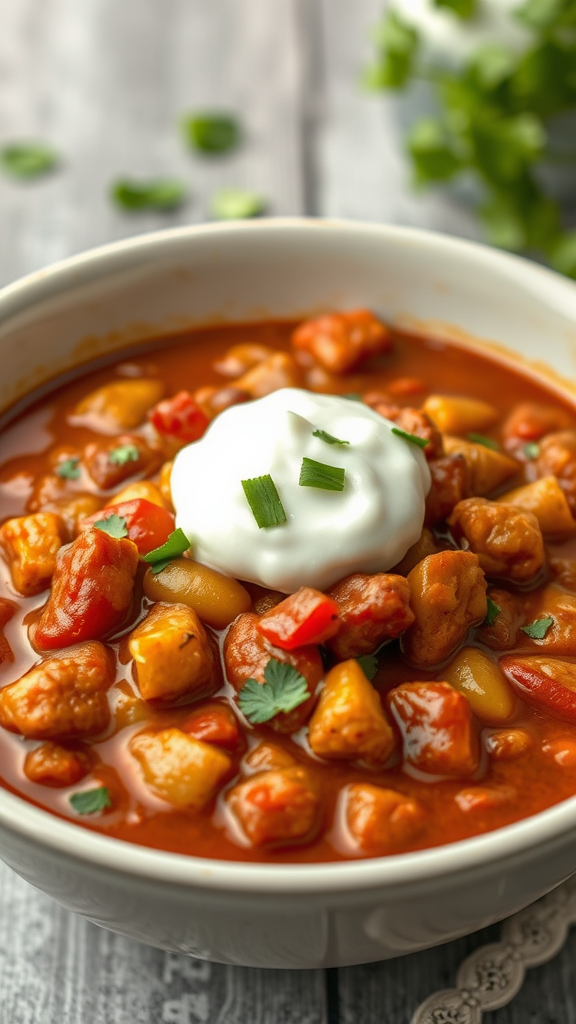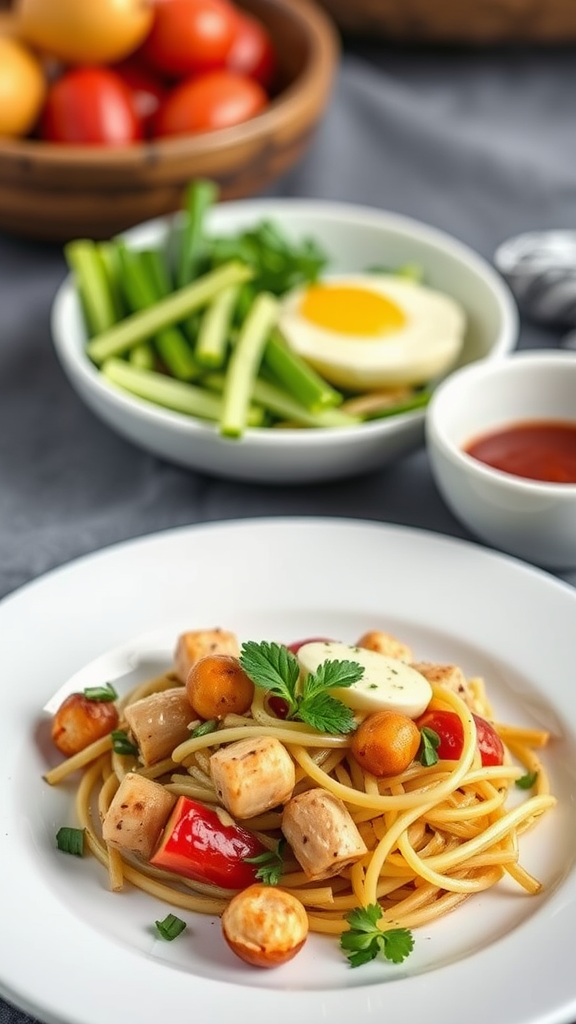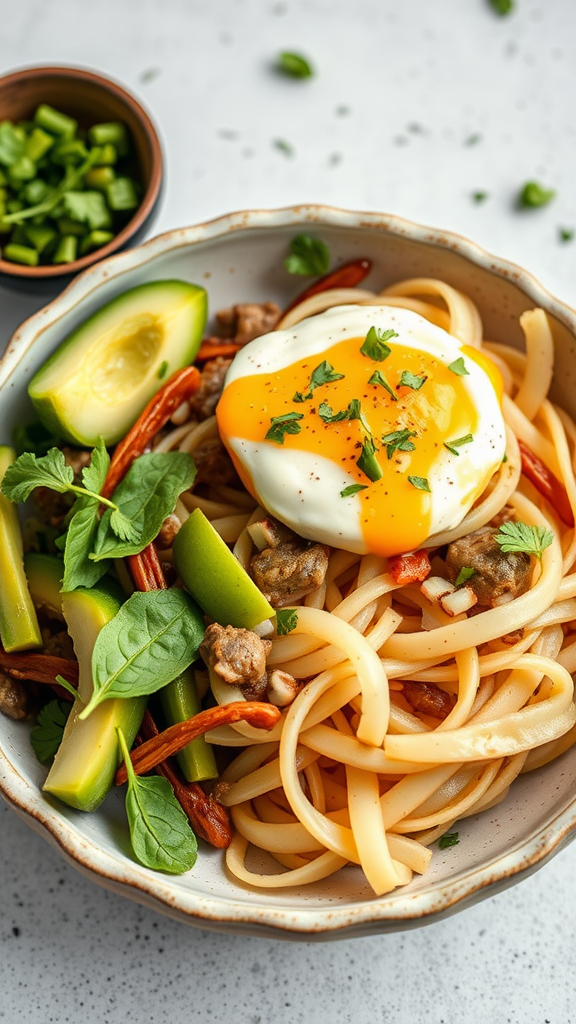Exploring the Best Paleo Chili Recipe for Flavor and Nutrition
Chili is a beloved dish that warms the soul and fills the belly. If you’re looking to enjoy a hearty meal that fits within the paleo guidelines, you’ve struck gold with the best paleo chili recipe. This dish is not only packed with flavor but also offers outstanding nutritional benefits. Whether you’re preparing for a family dinner, meal prepping for the week, or just craving something delicious, this chili will not let you down.
To create the best paleo chili, start with quality ingredients. By opting for fresh, whole foods, you ensure that your chili is both nutritious and flavorful. Here’s a list of ingredients you’ll need:
- 1 pound grass-fed ground beef (or turkey for a lighter option)
- 1 large onion, diced
- 2 garlic cloves, minced
- 1 bell pepper, chopped (any color you prefer)
- 2 medium zucchini, diced
- 1 can (14 oz) diced tomatoes (look for no added sugar)
- 1 cup beef broth (or vegetable broth for a vegetarian chili)
- 2 tablespoons chili powder (adjust to your taste)
- 1 teaspoon cumin
- 1 teaspoon paprika
- Salt and pepper to taste
- Optional toppings: avocado, cilantro, or lime wedges
Once you have gathered all your ingredients, you can easily prepare a delicious chili that’s sure to impress.
Start by heating a large skillet or a pot over medium heat. Add the ground beef, breaking it apart as it cooks. As the meat begins to brown, toss in the diced onions and garlic. Sauté until the onions are translucent, which usually takes about 5 minutes. This process develops a robust flavor that becomes the base of your chili.
Next, add the chopped bell pepper and zucchini to the pot. Cook these vegetables for about 3-4 minutes until they soften slightly. Once you’ve got that perfect blend of meat and veggies, it’s time to introduce the spices. Stir in the chili powder, cumin, and paprika. Allow these spices to cook for another minute to release their flavors.
Now comes the key moment: adding the liquids. Pour in your diced tomatoes and broth, stirring well to combine. Bring this mixture to a boil, then reduce the heat to low and let it simmer. Cover the pot and let it cook for at least 20 minutes, but if you have time, allowing it to simmer for longer makes the flavors even richer. Stir occasionally to prevent sticking.
During the last few minutes of cooking, don’t forget to taste your chili. Adjust the seasoning with salt and pepper according to your preference. You can also tweak the spice level by adding more chili powder if you prefer extra heat.
Once your chili reaches the desired thickness and flavor, it’s ready to serve. Ladle it into bowls and finish with your favorite toppings. A sprinkle of fresh cilantro or a few slices of creamy avocado can take your paleo chili to the next level.
Offering various health benefits, this paleo chili is a powerhouse of nutrition. The ground beef is an excellent source of protein, while the veggies provide essential vitamins and minerals. Zucchini adds a unique texture and is low in calories, making it a fantastic addition. Plus, it’s gluten-free and free from dairy, making it suitable for those following strict paleo guidelines.
Enjoying this chili not only satisfies your taste buds but also aligns with a well-rounded nutritional plan. Embrace the warmth and hospitality of a bowl of good chili, and treat yourself and your loved ones to a delightful and nourishing meal.
With this best paleo chili recipe, you’ll never look at conventional chili the same way again. Packed with flavor and nutrients, it’s a dish you can feel great about serving any day of the week. So, roll up your sleeves and get cooking; your taste buds will thank you!
Tips for Customizing Your Chili: Paleo-Friendly Add-Ins and Variations
Are you looking to spice up your chili while keeping it paleo-friendly? Customizing your chili can be a fun and delicious way to explore different flavors and textures. The best paleo chili recipe is not just about the base ingredients; it’s also about how you personalize it to suit your taste preferences. Here are some tips for adding your unique twist while sticking to paleo principles.
Start with a solid base. The core of any chili usually consists of ground meat, tomatoes, and spices. For a paleo-friendly chili, choose high-quality protein sources like grass-fed beef, organic turkey, or even mild pork. These meats are not only flavorful but also fit well within a paleo diet. You can also try unconventional meats like bison or venison for a twist. These protein options provide a rich base and an excellent source of nutrients.
Next, consider the vegetables you want to add. Paleolithic diets emphasize whole, unprocessed foods, so using fresh, seasonal produce is key. The following vegetables can enhance your chili by adding flavor and nutrition:
- Bell Peppers: Diced bell peppers add a sweet crunch. Use a variety of colors for visual appeal.
- Onions: Sauté them first to release their sweetness and add depth to your chili.
- Garlic: A few minced cloves of garlic can elevate the flavor profile significantly.
- Carrots: Dice them finely for a subtle sweetness that complements the spices.
- Zucchini: This veggie seamlessly absorbs flavor and adds bulk to the dish.
Using spices and herbs is essential when making paleo chili. This is where you can really let your creativity shine. Essential spices include:
- Cumin: This spice imparts warmth and is a classic chili flavor.
- Paprika: Choose smoked paprika for a deeper, richer flavor.
- Chili Powder: A mix of ground chilies helps define the dish, so don’t shy away from it!
- Oregano: Fresh or dried oregano gives a robust, earthy touch.
- Salt and Pepper: Don’t forget to season to taste; it makes a world of difference.
You can elevate your paleo chili with some fun and creative add-ins. Here are some ideas to consider:
- Sweet Potatoes: Cut them into small cubes. They add a creamy texture and natural sweetness.
- Mushrooms: Chopped mushrooms bring a hearty feel and can replace some of the meat if desired.
- Avocado: Topping your chili with fresh avocado not only adds creaminess but also healthy fats.
- Coleslaw: Try a light coleslaw on top for a crunchy contrast to your chili.
- Cilantro: Fresh cilantro just before serving gives a burst of freshness that brightens the flavors.
If you’re exploring different flavor profiles, consider adding some unique ingredients that are still paleo-friendly. Try including:
- Coconut Aminos: A soy sauce alternative that adds depth and umami.
- Lime Juice: A squirt of lime juice just before serving can add brightness to your dish.
- Hot Sauce: If you like heat, there are several paleo-friendly hot sauces to try.
- Chopped Nuts: For a nutty flavor and extra crunch, sprinkle some walnuts or almonds on top.
Cooking methods can also affect the outcome of your chili. Consider slow-cooking your chili for at least a few hours. This allows the flavors to meld and gives the meat a tender texture. If you want a quicker option, a stovetop can work just as well; just ensure you let it simmer long enough for the spices to develop fully. A pressure cooker can also be a handy tool if you’re short on time.
By customizing your chili, you not only make it unique but also cater it to your taste while maintaining the health benefits of a paleo diet. Don’t be afraid to experiment with different ingredients, spices, and cooking methods. You may just create a masterpiece that becomes your signature dish!
Conclusion
When it comes to finding the best paleo chili recipe, the journey is as exciting as the destination. Emphasizing flavor and nutrition, this dish becomes a versatile staple in your kitchen. By focusing on fresh vegetables, high-quality meats, and healthy fats, your chili not only aligns with paleo principles but also supports a balanced lifestyle.
Don’t hesitate to make this recipe your own! The beauty of chili lies in its adaptability. You can experiment with various paleo-friendly add-ins, from different types of peppers to unique spices, ensuring each batch reflects your personal tastes. Consider adding sweet potato for sweetness or kale for an extra nutrient boost. Each variation allows you to explore new flavors while sticking to your paleo diet.
Remember, cooking is all about enjoyment and creativity. Don’t be afraid to tweak the recipe to suit your family’s preferences or dietary needs. Whether you like your chili spicy, sweet, or with a bit of tang, the options are endless. By taking ownership of the ingredients, you not only boost the nutrition of your meals but also create a dish that brings joy to the dinner table.
As you whip up this best paleo chili recipe, think of it as more than just a meal—consider it an opportunity for family bonding and shared experiences. The satisfaction of creating a hearty, nutritious chili that everyone loves will make all your efforts worthwhile. So go ahead, gather your ingredients, and dive into a culinary adventure that’s healthy, delicious, and entirely paleo-approved!





Leave a Reply